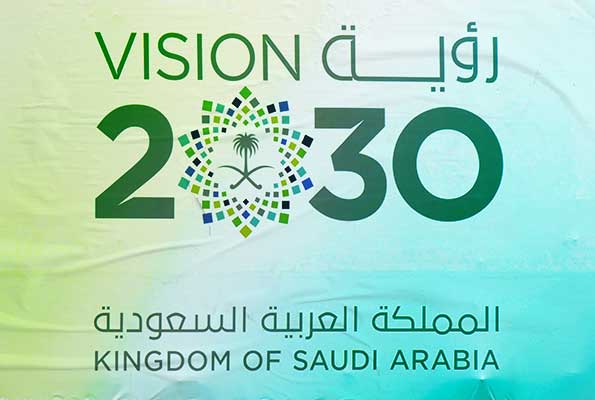The Middle Eastern peninsula was once a small nation of nomadic Bedouins immersed in religious lore but was transformed into a Kingdom with the ability to change the world with black gold in the 1930s by the discovery of oil beneath the plains of Dhahran in Saudi Arabia’s eastern province.
That authority is no longer assured.
Nearly a century after the nation discovered its oil wealth; the House of Saud dynasty has been forced by changing events to face the vital turning point it has reached, one that necessitates yet another fundamental reform.
A looming monarch in waiting who is prepared to create a country in his likeness, a growing population of young aspirants desperate for diverse opportunities, and a worldwide climate crisis that is forcing the globe to move away from oil. These elements have combined to form a single objective to maintain the kingdom’s prosperity.
It is known as ‘Vision 2030’, Saudi Arabia wants to accomplish its ambitious, three-pronged goal of improving the lives of its almost 40 million citizens, building an economy that is no longer reliant on oil, and maintaining its position on the world stage by the end of the decade.
Professor Simon Mabon, a senior research fellow at the Foreign Policy Center in London, told the media, “This isn’t just about diversifying the economy — it’s about transforming society with the aim of creating an agile economy that can respond to the challenges of the modern world.”
The country’s master plan, conceived by the 37-year-old Saudi Crown Prince Mohammed bin Salman and developed with the aid of McKinsey, has many moving elements, with its “gigaprojects” standing out.
One project in particular, Neom, is the culmination of ‘Vision 2030′ moving pieces. Neom’s centrepiece, The Line, a USD 1 trillion megacity, will be located in the northwest of the nation.
An enormous, mirror-like structure that will be around 650 feet wide and 100 miles long is depicted in early designs. According to Saudi, the state-of-the-art car-free metropolis will run entirely on renewable energy and put 9 million people within walking distance of amenities.
However, the clock is ticking: Saudi has reached the halfway point of its timeframe, with only seven years remaining, seven years after launching ‘Vision 2030’. It signals that the Kingdom ought to take itself more seriously than ever or risk falling behind.
Master Plan For ‘Vision 2030’
The country’s master plan, conceived by the 37-year-old Saudi Crown Prince Mohammed bin Salman and developed with the aid of McKinsey, has many moving elements, with its “gigaprojects” standing out.
One project in particular, Neom, is the culmination of Vision 2030’s moving pieces. Neom’s centrepiece, The Line, a USD 1 trillion megacity, will be located in the northwest of the nation.
An enormous, mirror-like structure that will be around 650 feet wide and 100 miles long is depicted in early designs. According to Saudi Arabia, the state-of-the-art car-free metropolis will run entirely on renewable energy and put 9 million people within walking distance of amenities.
In other words, The Line represents everything Saudi Arabia wants to accomplish with ‘Vision 2030’, to commit to a post-oil future, create livable communities with access to economic opportunity, and set the bar for a futuristic city that the rest of the world may aspire to.
There are over 20 additional ‘Vision 2030’ initiatives, like the Red Sea vacation spot and Qiddiya, a centre for the arts and entertainment that were designed to create employment opportunities for all Saudi Arabians.
For Saudi Arabia to create jobs, Gerald Feierstein, a senior fellow at the Middle East Institute and the former US ambassador to Yemen under President Barack Obama, said that integrating the private sector on a national and international level had become essential.
A significant portion of this is being funded by the Public Investment Fund, the potent sovereign wealth fund of Saudi Arabia, which is in charge of USD 700 billion worth of assets.
The fund has been on a spending binge recently, investing USD 45 billion in ‘SoftBank Vision Fund,’ Newcastle United, private equity, Tesla challenger Lucid, and golf, which are technology-related investments.
The fund, headed by Crown Prince Mohammed and its governor, Yasir Othman al-Rumayyan, aims to generate returns on bets fueling the West while encouraging leaders to invest and start up shop in the kingdom by becoming a marquee investor in several high-profile firms globally.
Being the largest oil exporter in the world, Saudi Arabia is encouraged by the disruption of Russian crude supplies caused by Russia’s conflict with Ukraine. Saudi Aramco, a state-owned oil firm, reported an astounding net profit of USD 161 billion in 2022.
But as the world shifts toward sustainable energy due to the climate issue, the Saudi royals are well aware of the growing significance of the country’s non-oil profits.
It explains why it has set an aim to increase the proportion of non-oil exports to its non-oil GDP from 16% to 50% as part of Vision 2030’s objectives. It also explains why it is investing so substantially both domestically and globally.
The success of Saudi initiatives is not guaranteed considering the country’s poor human rights record and international disrepute, but the sheer scale of the projects could help win over investors and skilled workers.



